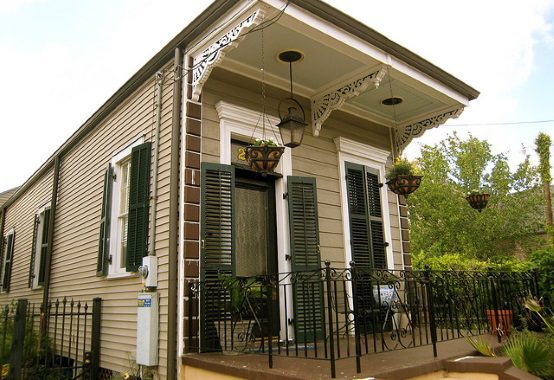Why San Francisco Has to Build Up

Is the shotgun starter home the answer to San Francisco’s famously desperate housing crisis?
Joel Kotkin suggests just that in a recent report and follow-up interview with SF Weekly. In so doing, he makes the classic suburbanist mistake of ignoring what lies below the building.
First, the context. San Francisco has long found favor as a short city on the bay, squeezed into a peninsula between the waters of the Pacific Ocean and San Francisco Bay. Home to the hippie haven of Haight-Ashbury in the Sixties, the city prided itself on a progressive resistance to trends that might spoil its cherished character. Some of the most restrictive land-use regulations in the country were imposed in order to keep towers of density out, and the seaside charm of low rooflines ubiquitous. Thanks to the temperate climate and the culture, the homeless found both accommodating weather and welcoming residents.
The rise of Silicon Valley in the nearby suburbs attracted a different kind of immigrant to the bayside city, though, and the maturation of the tech industry began drawing new residents to San Francisco at an enormous scale. As the city’s regulations prevented housing supply from growing apace with the exploding demand, rents and home prices followed the predictable course into the stratosphere. There has been a growing chorus from the right to center-left for greater housing density to be allowed in order to release the pressure that has turned San Francisco into one of the most distorted housing markets in the world, but it is resisted by long-time residents and anti-gentrification activists alike out of fear that the wealthy would run amok with their city.
Now, Kotkin argues, he has uncovered evidence that high-density building must in fact cater to the wealthy, and the resistance is justified. Tall downtown apartment buildings use more expensive materials than cheap starter homes, and have to clear severe regulatory hurdles to be completed. Ergo, San Francisco would be better off building cheap, flat single-family starter homes than higher-density multifamily structures.
The problem, of course, is that San Francisco looks like this:

San Francisco’s population may have doubled since 1915, but the city itself remains exactly as bounded by its aquatic borders as it was then, when it hosted the World’s Fair to celebrate the newly opened Panama Canal. The only direction left to build is up.
That may be a banal conclusion in urbanism circles by now, of course, but it is worth keeping up with Kotkin’s always-creative arguments in order to underline the oft-missing variable: the land.
City Observatory‘s Daniel Hertz effectively unpacks this point, pointing out that Kotkin’s construction materials argument would hold quite effectively in a vacuum: “if we constructed buildings floating out in space, that might make condos more expensive. But down here on Earth, buildings are built on land. And land costs money.” Moreover,
in high-demand housing markets, it’s land costs that make single-family homes so expensive. That’s because single-family homes have to absorb all of the price of the land they sit on in their own prices. If you build multiple homes on the same piece of land, then each of the homes only has to absorb a fraction of the land’s price.
In a city like San Francisco, with extremely limited land subject to extremely high (and still rising) demand, the only way to give housing a hope of affordability is to split the land cost among more people. The market likely could have long cleared that hurdle if it weren’t hopelessly shackled by the city’s land-use regulations.
Of course, you could also socialize the cost by building subsidized affordable housing, if you so desired, layering further market distortions upon San Francisco’s already tortured peninsula. Many urbanists believe that is the only way affordable housing can be built to provide for the lower end of the market at this point. I’ll be picking up that argument in my next post.
Jonathan Coppage is an associate editor at The American Conservative. “New Urbs” is supported by a grant from the Richard H. Driehaus Foundation.
Comments